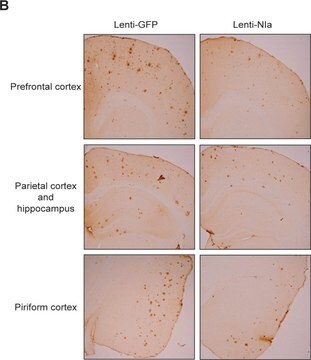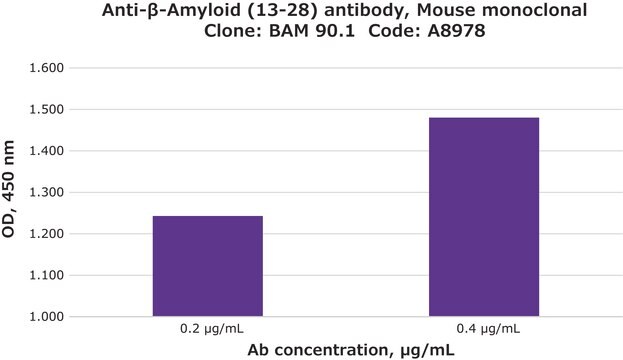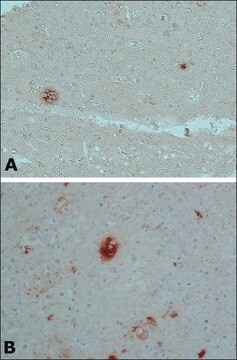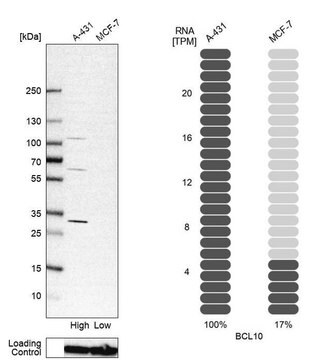A3981
Anti-β-Amyloid antibody, Mouse monoclonal

clone BAM-10, purified from hybridoma cell culture
Sinónimos:
Anti-A-BETA, Anti-Amyloid Beta Precursor Protein
About This Item
Productos recomendados
biological source
mouse
Quality Level
conjugate
unconjugated
antibody form
purified immunoglobulin
antibody product type
primary antibodies
clone
BAM-10, monoclonal
form
buffered aqueous solution
species reactivity
human
packaging
antibody small pack of 25 μL
enhanced validation
independent
Learn more about Antibody Enhanced Validation
concentration
~1.5 mg/mL
technique(s)
immunohistochemistry (formalin-fixed, paraffin-embedded sections): 2.5-5 μg/mL using formic-acid treated tissue sections of human Alzheimer disease brain tissue
indirect ELISA: suitable
western blot: suitable
isotype
IgG1
UniProt accession no.
shipped in
dry ice
storage temp.
−20°C
target post-translational modification
unmodified
¿Está buscando productos similares? Visita Guía de comparación de productos
General description
Immunogen
Application
Biochem/physiol Actions
Physical form
Disclaimer
¿No encuentra el producto adecuado?
Pruebe nuestro Herramienta de selección de productos.
Related product
Storage Class
10 - Combustible liquids
wgk_germany
WGK 3
flash_point_f
Not applicable
flash_point_c
Not applicable
ppe
Eyeshields, Gloves, multi-purpose combination respirator cartridge (US)
Elija entre una de las versiones más recientes:
¿Ya tiene este producto?
Encuentre la documentación para los productos que ha comprado recientemente en la Biblioteca de documentos.
Artículos
Alzheimer's disease (AD) is the most common cause of dementia in the elderly and is characterized by gradual loss of cognitive functions.
Nuestro equipo de científicos tiene experiencia en todas las áreas de investigación: Ciencias de la vida, Ciencia de los materiales, Síntesis química, Cromatografía, Analítica y muchas otras.
Póngase en contacto con el Servicio técnico



![Anti-β−Amyloid [22-35] antibody produced in rabbit affinity isolated antibody, buffered aqueous solution](/deepweb/assets/sigmaaldrich/product/images/167/133/003c2b30-0f73-4e7e-b498-e4d35df4d55a/640/003c2b30-0f73-4e7e-b498-e4d35df4d55a.jpg)




